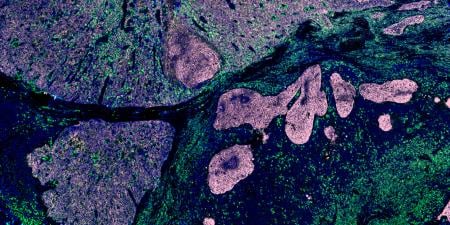Cigarette smoking remains the leading cause of preventable morbidity and mortality in the United States [1]. Despite numerous educational campaigns and public knowledge of the devastating health effects, 45 million Americans—21 percent—continue to smoke [2]. More encouragingly, a large body of evidence supports the effectiveness of physician interventions [3]; in fact, smoking cessation is strongly recommended by the U.S. Preventive Services Task Force [4]. Past research had shown that physicians ineffectively counseled their patients to quit smoking, but recent studies have found that more physicians are getting better at practicing at least the first three of the "5A's"—ask, advise and assess—though they continue to fall short on two—assisting and arranging follow-up [5]. Training physicians in smoking cessation techniques is essential to achieving the cancer control goals of the U.S. Department of Health and Human Services' Healthy People 2010. Medical students, if skillfully trained in counseling adults, families and children, can be vital players in the effort to combat this great public health problem.
Two sentinel reports documented "missed opportunities" and inattention to tobacco dependence curricula in U.S. medical schools. Ferry et al. found in 1999 that 31 percent of schools averaged less than one hour of instruction per year in tobacco cessation [6], and Spangler et al. observed both instruction gaps and teaching methods that resulted in only short-term retention of intervention skills by students [7].
In response to the documented inadequacy of smoking cessation interventions, a subcommittee of the Interagency Committee on Smoking and Health published a National Action Plan for Tobacco Cessation that included a recommendation for investing "…in training and education by FY 2005 to ensure that all clinicians in the United States have the knowledge, skills and support systems necessary to help their patients quit tobacco use" [8]. The action plan specifically recommended that the U.S. Department of Health and Human Services "…convene a diverse group of experts to ensure that competency in tobacco dependence interventions is a core graduation requirement for all new physicians and other key health care professionals" [8].
New information
The National Cancer Institute funded a consortium of 12 U.S. medical schools known as PACE: Prevention and Cessation Education in Medical Schools to develop, test and integrate tobacco curricula throughout the four years of medical school. In 2004, site investigators at each of the 12 schools conducted comprehensive assessments of their behavioral science and tobacco curricula. In contrast to the findings of Ferry and Spangler and their colleagues, many first-year and second-year courses contained tobacco information, and most clerkships, notably family medicine and internal medicine, provided skills and approaches that future physicians could use with patients who smoke [9]. Overall, PACE schools reported that 36 percent of medical school courses included information on tobacco and averaged about 10 hours of tobacco-related teaching over the four years [9]. One can only speculate that the momentous national anti-tobacco groundswell fueled by tobacco taxes, the national media campaign and partial reimbursements for tobacco counseling spilled into the once-resistant medical school curriculum. PACE researchers also developed competencies for graduating medical students [10].
Recent analysis of more than 1,600 second-year and fourth-year student responses from the PACE schools mirror many of the findings in a national curricular assessment [9]. Nearly half of the fourth-year students in the national sample reported receiving more than one teaching session on tobacco cessation via case-based discussion, a simulated patient encounter or a clinical skills course; nevertheless, more than 80 percent of fourth-year students felt that there was not enough cessation information in their courses [11]. Students whose intended career was primary care had self-reported skill levels similar to those choosing a specialty, and students who had never smoked had skill levels similar to those who had smoked for at least three years. Students reported receiving instruction for assisting patients with smoking cessation in family medicine (80 percent) and internal medicine (70 percent) clerkships but far less so during clerkships in pediatrics (54 percent), ob/gyn (41 percent) and surgery (16 percent). Not surprisingly, curriculum assessments of surgery, pediatric and ob/gyn clerkships found the student's reporting to be largely accurate [9].
Like the physician data cited earlier, student rates were high when it came to asking patients about (94 percent), advising patients (82 percent) and making assessments of patient smoking habits (75 percent). But opportunities to assist with a cessation plan (30 percent) and to arrange follow-up (21 percent) were noticeably lower. In many routine settings, the chance to practice cessation-assisting techniques was still low. Only a minority of students had ever provided a hospitalized patient who wanted to quit smoking with a referral, and most students had not seen reminders such as chart stickers, checklists or new vital sign measures that include smoking status to prompt them to motivate patients not to smoke [11].
Some next steps
Curricula must be reformed in at least two connected ways. First, students and academic leaders should work together to weave a new tobacco curriculum into existing courses and modules, as has been done for substance abuse or behavioral counseling and interviewing techniques. The explosion of new scientific information coupled with the breadth of professional responsibility creates constant demands and challenges to the already-packed medical school schedule. An underlying assumption of this approach is that tobacco control objectives can best be achieved if they are integrated with and complementary to learning objectives in the core curriculum. Training in smoking cessation and prevention counseling encompasses skills that are important to all aspects of care, such as: (1) communicating effectively; (2) obtaining full patient histories; (3) counseling in behavior change and motivational techniques; (4) advising patients of treatment options; (5) negotiating and sharing decision making; (6) educating patients and families; (7) working as part of a health care team; and (8) identifying factors that place individuals at risk for disease.
Second, it is equally, if not more, important that education for physicians and physicians-in-training attack longstanding attitudes and misconceptions. Our study of students at the PACE schools found that fourth-year students had more negative attitudes about their ability to impact patient smoking behaviors than second-year students [11]. Consequently, the benefits of tobacco cessation counseling should be intertwined into all core curricula. Training for physicians and medical students should center on the following motivational points:
Many patients are quitting. For the first time ever, the proportion of U.S. adults who have successfully quit smoking surpasses the proportion of those who continue to smoke—more than 46 million quitters compared to 45 million current smokers [12].
Clinical interventions can be remarkably successful. Only three to five percent of smokers can quit on their own, but guideline-driven interventions can boost cessation rates to 15 percent to 25 percent, translating into millions of new ex-smokers each year.
Patients expect their physicians to counsel them about smoking. Eighty percent of smokers report that they want to quit and more than 70 percent of smokers see a physician each year [13].
Tobacco dependence is a chronic condition that often requires repeated interventions. Tobacco dependence requires perseverance on the part of the physician, student and patient alike. Nonjudgmental persuasiveness coupled with full utilization of the 5A schema can accelerate patient interest in treatments for smoking cessation and subsequent successful quitting strategies.
Medical students and medical student organizations can effect change. These groups have the power to create their own tidal wave for tobacco counseling. In clerkships such as ob/gyn, where patients are in desperate need of encouragement and motivation to prevent an all-too-common relapse, 16,000 U.S. medical students intervening with at least one obstetric and one gynecologic patient could have profound impact on the lives of not only the patients but the families as well. In response to the scarcity of curriculum in ob/gyn and pediatric settings, PACE investigators have developed new modules for tobacco education in these clerkships. Likewise, the adults in 25 percent of U.S. households who continue to smoke in front of their children could benefit greatly from student counseling and guidance.
References
- Mokdad AH, Marks JS, Stroup DF, Gerberding JL. Actual causes of death in the United States, 2000. JAMA. 2004;291(10):1238-1245.
-
Centers for Disease Control and Prevention. Tobacco use among adults. MMWR Morb Mortal Wkly Rep. 2006;55:1145-1148.
-
Fiore MC, Bailey WC, Cohen SJ, et al. Treating Tobacco Use and Dependence: A Clinical Practice Guideline. Rockville, Md: Public Health Service Department of Health and Human Services; 2000. Accessed December 12, 2006.
-
US Preventive Services Task Force. Counseling to Prevent Tobacco Use and Tobacco-Caused Disease: Recommendation Statement.Rockville, Md: Agency for Healthcare Research and Quality; 2003. Accessed December 12, 2006.
- Quinn VP, Stevens VJ, Hollis JF, et al. Tobacco-cessation services and patient satisfaction in nine nonprofit HMOs. Am J Prev Med. 2005;29(2):77-84.
- Ferry LH, Grissino LM, Runfola PS. Tobacco dependence curricula in US undergraduate medical education. JAMA. 1999;282(9):825-829.
- Spangler JG, George G, Foley KL, Crandall SJ. Tobacco intervention training: current efforts and gaps in US medical schools. JAMA. 2002;288(9):1102-1107.
- Fiore MC, Croyle RT, Curry SJ, et al. Preventing 3 million premature deaths and helping 5 million smokers quit: a national action plan for tobacco cessation. Am J Public Health. 2004;94(2):205-210.
- Powers CA, Zapka JG, Bognar B, et al. Evaluation of current tobacco curriculum at 12 US medical schools. J Cancer Educ. 2004;19(4):212-219.
-
Geller AC, Zapka J, Brooks KR, et al; for the Prevention and Cessation Education Consortium. Tobacco control competencies for US medical students. Am J Public Health. 2005;95(6):950-955.
-
Geller AC, Powers-Ozyurt C, Brooks KR, O'Donnell J, Zapka J. Tobacco surveys of US medical students. Abstract presented at: American Association of Cancer Education; 2006; San Diego, Calif.
-
National Center for Chronic Disease Prevention and Health Promotion. MMWR—Tobacco Use Among Adults— United States, 2005. Accessed November 15, 2006.
- Solberg LI, Boyle RG, Davidson G, Magnan SJ, Carlson CL. Patient satisfaction and discussion of smoking cessation during clinical visits. Mayo Clinic Proc. 2001;76(2):138-143.



